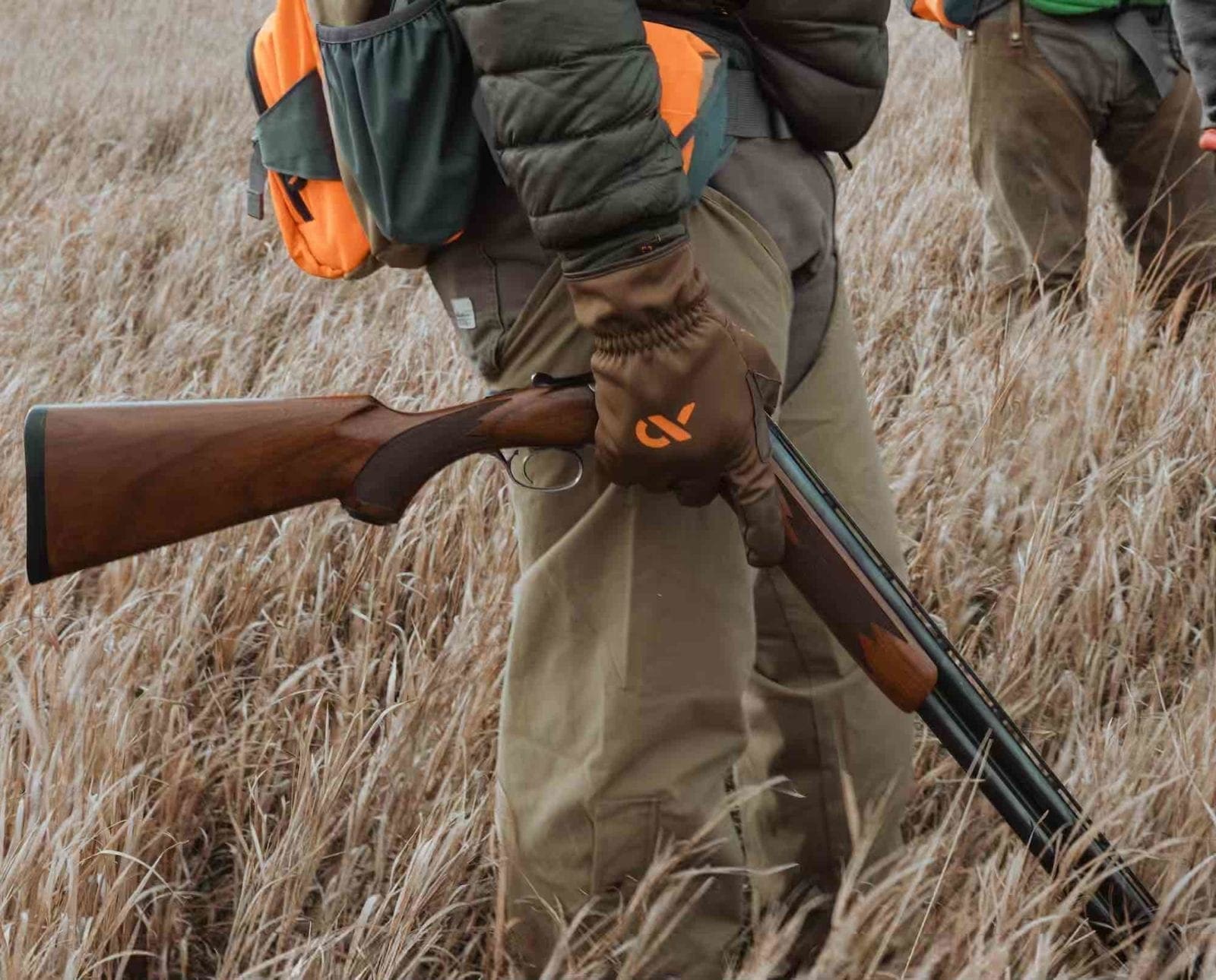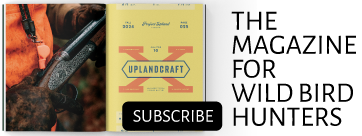Home » Firearms and Shooting » Shotguns » Reasons to Consider Carrying a Backup Shotgun
Reasons to Consider Carrying a Backup Shotgun

Edgar Castillo is a recently retired law enforcement officer for…
Consider the benefits of a spare shotgun in the event of damage, ammunition availability, or just needing a different tool to get the job done
I had been walking on a small ridge while the others were down below. Our group was working a large, old crop field that had become weedy. Noticeable remnants of grain were still evident. A couple of roosters had already flushed, but they were now being carried in the back of bird vests. My over-under was at port-arms, ready to swing into action with a quick snap to the shoulder. I have a tendency to occasionally look down at my feet while hunting. I do this to avoid stepping into those dark abyss badger holes or the occasional rock or debris on the ground. I thought it was important for me to know where I placed my next step. As a young boy, my father would tell me to keep my eyes towards the skyline for birds that might take flight.
Well, on one outing several years ago, I must’ve not been watching where I was going; the next thing I knew, I was falling towards the ground. It happened so quick that the only thing I was able to do was to let go of the shotgun as I hit the ground…hard. Laying on the ground, I looked back towards my feet to see what had caused me to fall. Wrapped around my boots like rusty brown tentacles was barbed wire. I could see it stretched some distance, probably an abandoned and torn-down fence line. A wooden post lay on its side, camouflaged by the weedy prairie. Untangling myself, I brought my 12-gauge in for inspection. I hadn’t hit it on anything—it should be okay, right? Upon a closer look, the wooden stock had two cracks where it met the receiver. The force of the fall on my right arm had caused the damage. I ended up having to hike back to the truck and switch to my backup shotgun for the remainder of our trip.
My father had instilled in me at a young age to always bring a second shotgun…just in case. Think of your backup shotgun like a relief pitcher in the bullpen, ready to step in when trouble rears its ugly head in the uplands, woods, or prairies.
SUBSCRIBE to the AUDIO VERSION for FREE : Google | Apple | Spotify
Why carry a spare shotgun?
That single incident reinforced to me that I should never dream about hunting without bringing my spare or backup shotgun along. Would you? I do the majority of my upland bird hunting with my Ruger Red Label 12-gauge over-under shotgun, but I always bring my Remington 870 16-gauge just in case. Yes, two different gauges and actions, but I’ll get into that soon. I’m going to go out on a limb, but I would assume most wingshooters rarely experienced a breakdown of their primary shotgun in the field, though it can absolutely happen. Besides having a shotgun go down due to damage, malfunction, debris, or other reasons that render the shotgun unsafe to use, there are other reasons why toting along a backup shotgun might be worthwhile.
Traveling with a second shotgun can provide bird hunters with more options for what can be hunted. Most know that 12-, 16-, and 20-gauges are versatile in their use and plenty capable of knocking down large birds like pheasants to medium birds such as grouse and even small fowl such as quail, woodcock, or doves. This is open to vigorous debate, but in my opinion a 28-gauge may not be the best choice of shotgun for late season flushing ring-necked pheasants or skittish prairie chickens and sharptails, in which case distances may be a factor.
Access to ammunition
This brings me to my next point in the accessibility of a second shotgun. Let’s say you’re toting a nimble .410 and the area requires non-toxic loads to hunt the wetlands and cattails for pheasants. Finding the appropriate non-toxic loads is going to be a problem. Ammo availability should be on your mind when you’re considering the merits of toting along spare shotguns. When it comes to 12s or 20s, most rural gas stations and small-town convenience and sporting good stores will offer a decent selection of ammunition in these gauges. But when the 16, 28, or .410 come into play, finding ammo for either your main or spare shotgun could be difficult.
The ideal scenario is to take a good supply of ammunition with you on a bird hunting road trip. But if you happen to get into a lot of birds or have a long shooting slump, it’s worth thinking about what you’ll be able to buy at your destination.
Non-toxic loads are becoming more common and are in fact required when hunting certain areas. Hunters should take note that carrying only lead loads may restrict their ability to hunt in certain areas such as Waterfowl Production Areas or other public lands where steel or non-toxic is required.
When it comes to ammo and switching shotguns, make sure that if it involves a different gauge, all shells are checked prior to stepping into the field. You definitely don’t want to insert the wrong shot shell.
Shotgun familiarity
Not only is it important to have a backup shotgun, but it’s equally critical for hunters to be familiar with the backup shotgun. If the time comes when the spare shotgun needs to be uncased, then hunters who are familiar and regularly practice with it will approach the hunting situation with a fair amount of confidence. Bird hunters should make it a point to acclimate themselves to both guns.
Should both the main and spare shotguns be fairly similar? Ideally both shotguns should fit the hunter the same. Problems could arise if switching from one action to another, such as from an over-under to a pump. I personally fall into this category. My main gun is a 12-gauge over-under, but my spare is a 16-gauge pump. I have discovered that it takes me a few shots to get used to the different action. I tend to forget to operate the slide to eject and load shotshells. The situation could be reversed and find me pulling on the fore-end of a double thinking it is a pump action shotgun.
There are other variables that could throw off hunters using spares, such as the position of the safety. With many autos and pumps, the safety is usually somewhere near the trigger guard, but not always. The feel and size of the shotgun could also affect shooting.
So, before you take off, you should be prepared to hunt with the shotguns that you’re taking and ready to deal with any unexpected situations that may arise. Spend some time becoming familiar and reconnecting with that spare shotgun that is hardly used. Shoot rounds of skeet, trap, or sporting clays to get comfortable. If something does happen in the field, whether it’s a malfunction, damage, or merely the situation that calls for the use of the spare shotgun, it won’t be so unfamiliar in its use.
Edgar Castillo is a recently retired law enforcement officer for a large Kansas City metropolitan agency. He also served in the United States Marine Corps for twelve years. Edgar longs for the colors of autumn and frosty, winter days so he can explore the landscapes in search of wild birds in wild places. His passion lies in the uplands as he self-documents his travels across public lands throughout Kansas hunting open fields, walking treelines, & bustin’ through plum thickets.




Good, common sense article. Another reason I often carry a back-up is if the weather looks like it could change to rain. If I am hunting birds with my 100 year old Fox A, I really don’t want it getting soaked. That I when I switch to my Remington 870, or Ithaca 37.
Thanks Wes! I would probably carry a backup too if I had a 100 year old Fox! As I said, my father instilled in me to always bring a second shotgun just in case.
I typically carry a backup gun when hunting more than one day. A buddy and I hunt Nevada chukar day trips extensively. Typically we separate at the truck and hunt independently with our own dogs for the day. On a day trip a few years back we drove 140 miles one way and discovered when we arrived at the destination that he had forgotten to pack his shotgun. We let the dogs go and he decided to walk with me to take some video and photos. After an hour or two I connected on 4 birds. He shoots a semi-auto but I handed him my shotgun (a O/U Beretta 686) and told him to have some fun. He connected on 4 more birds and we had a great day together. If I had packed an extra that day we would have likely missed out on a great experience but I totally understand and agree with your suggestion. Thanks for bringing back the memories!
You’re welcome for the memories! I too have been in similar situations when my hunting partner forgot to pack a shotgun. However, instead of foregoing the hunt, he just used mine. We had a great day and had a few laughs.
A backup is nice, but in some areas ,like California, I leave nothing of value in the truck. To many thieves. Those of you who live and hunt in areas where theft is not a problem are fortunate.